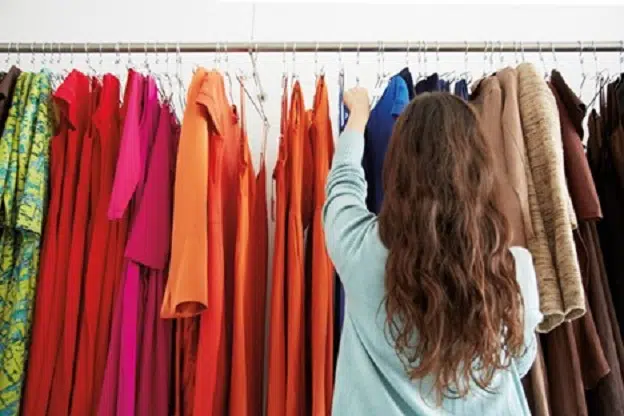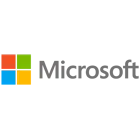
There’s a rise of the Workday Consumer who, due to changes stemming from the pandemic, unapologetically switches between employee, personal and consumer mode throughout the day. This behavior stands to have a significant impact on how your advertising engages them.
Microsoft Advertising recently partnered with Forrester Consulting on research outlining how work and shopping behaviors have changed for people who work remotely. We take a deeper look at the behaviors of these consumers, the nuances of their shopping and work behavior, and how advertisers should think about reaching them.
The Workday Consumer mindset
To be more effective in reaching the Workday Consumer, we must consider that nearly 62% surveyed said they spend time shifting between various mindsets during work hours. During this time, they research or purchase products and services, sometimes putting those tasks ahead of browsing social media and consuming entertainment.1
While mobile is still a part of the decision journey, many consumers use their PCs to research and purchase high consideration items across categories.

In fact, nearly two-thirds of respondents (63%) said they spent more time on their work PC than before the pandemic, and 56% said they use work laptops and videoconferencing software for personal purposes. Almost half (48%) said they prefer not to switch devices when doing personal tasks during work time.1
When targeting Workday Consumers, it’s important to consider their mindset, which influences the types of tasks, such as purchases, they’re undertaking.
Three ways to reach the Workday Consumer
As you reevaluate your methods to reach Workday Consumers, here are a few ideas that you can use for campaign planning.
1. Consider working mode
The Workday Consumer’s time and place of work has shifted dramatically. They may be hybrid, desk-based or frontline, office-based or remote. In each of these situations their mindset will be different.
Having a deep understanding of your audience will make a difference in reaching and engaging them. Employ methods such as self-reported studies, observational studies, location tracking and time-of-day data.
Just as Workday Consumers have shifted their mindset, advertisers must also shift targeting strategies. Use products that employ automation to understand audience behavior and adapt in real-time to adjust to their search desires. Consider using:
- Responsive Search Ads to optimize ad copy and refine messaging to home in on audience mindset when they’re searching.
2. Engage Workday Consumers throughout the funnel
To attract, convert and retain Workday Consumers, it’s important to craft messaging, content and ads optimized for PC, search and native. This is especially important for upper-funnel campaigns because Workday Consumers actively research products and services in between work tasks.
Once they continue their search, you’ll need to prepare to target them across their online purchasing journey. Engage partners that enable targeting based on signals such as opted-in digital consumer tracking panels, contextual insights, time-of-day data, and others to predict audiences and performance.
- Smart Campaigns use automation to learn and adapt throughout the customer decision journey in real-time.
- Dynamic Remarketing lists are a mid-funnel ad type to show searchers ads based on what they’ve looked at, considered, or already purchased on your website.
3. Use the verticals they’re researching
It isn’t just one vertical that’s affected, this is relevant to all advertisers.
The top 10 categories researched (in order) are travel, clothing, tools, sporting goods, electronics, financial products and services, health and personal care, household appliances, media/entertainment, and cars.
When working, people are in a productive mindset, and they view researching and purchasing with efficiency in mind. This mindset has evolved the consumer journey, and much of this research is done on their work PC.
- Vertical ads are a good option when trying to reach the Workday Consumer at the bottom of the funnel.
Vertical ads are different for each category or industry. They focus on information that a specific consumer is looking for and provide it in an engaging, easy-to-read format (pre-click) and with images. Vertical ads for travel, financial services and automotive industries, with more coming soon.

The Workday Consumer and niche personas
Consumers’ attention spans have been famously likened to that of goldfish for years. Now you must also consider short attention spans and distracted and fragmented browsing as they shift more frequently between work and personal tasks. Therefore, knowing your audience thoroughly is more important than ever.
For example, we took a deep dive into our data and found our new attitudes and behaviors causing a change in how we reach and engage customers across industries. They are:
- Digital Nomads
- Empowered Activists
- Luxury Shoppers
- Self-Care Enthusiasts
Download the booklet for a wealth of information on these attitudes.
The Workday Consumer behavior shows up across all these personas, as well as others you may have developed yourself. Read on for tips on how we applied the Workday Consumer mindset to the four new personas for ideas on how you might apply the thinking to your own personas.
Luxury Shopper
We already know the Workday Consumer is working remotely while researching, purchasing products and services, performing personal tasks, chores, managing finances, and consuming entertainment. They have a few additional characteristics if they’re also a Luxury Shopper.

The online Luxury Shopper seeks to elevate everyday experiences with the finer things and is comfortable purchasing online. They’re browsing online, researching, and looking at the large variety of luxury goods online instead of in-store.2
They can be found across multiple search engines, with 51% of them researching vacations, and 43% searching for business-related topics.3
Because Workday Consumer Luxury Shoppers research before purchasing and are quick to switching tasks, consider features that grab their limited attention. Remind them to revisit sites and put them closer to making a purchase decision before they even click.
- Multimedia Ads are exclusive to Microsoft Advertising and drive quicker engagement by combining text and images for the look and feel of social media ads. For people with limited time, these can earn their attention quickly.
- Ad extensions make ads more effective and attract relevant customers by grabbing attention and positioning your message pre-click. For shoppers with limited time, this puts what they need front and center.
- On the Microsoft Audience Network you can target and reengage with audiences while they’re browsing and researching websites such as MSN, Microsoft Edge, and Outlook.com, as well as CBS Sports, Fox News and more. Your ads meet consumers where they are, and reminds them to reengage with your brand.
- In-market Audiences are curated lists of users who are in-market for a specific purchase category. Using these lists helps you cut through the noise and get in front of those most likely interested, so they don’t have to waste time searching.
Empowered Activist
The Empowered Activist is the consumer who makes purchasing decisions by spending money on brands that align with their own values. They seek eco-friendly, inclusive, ethical small business-oriented brands, and they vote with their wallet.
Empowered Activists on Microsoft Advertising are 33% more likely to purchase online if they know the product or company is environmentally friendly.4

They use multiple devices throughout their day to shop and to research products and company or brand values. On the Microsoft Search Network, we saw a 141% year-over-year (YoY) increase in beauty searches for black-owned and minority-owned related terms.5
- Try using business attributes, which are text additions that can be added to search ads to showcase the mutual values between your brand and your customers. Examples include carbon-neutral, minority-owned, and wheelchair accessible, among others.
Self-Care Enthusiasts
Self-Care Enthusiasts are interested in spending time where it matters most, whether with family, on mental health, or fitness. They seek brands that enhance their physical and mental well-being. This audience works hard across all aspects of life. Their time is stretched throughout the day, so time management is top of mind.

This group consistently multitasks between work, school, life and leisure activities.
- Use In-market Audiences to find curated lists of users for a specific purchase category to ensure you’re targeting the right groups at the right time.
Digital Nomads
Digital Nomads are location-independent people who value flexibility and make a living working online. Because they work 100% remotely, they can travel constantly and move from place to place as long as there’s an internet connection.

Digital Nomads are the ultimate Workday Consumer, as they’re searching for housing, transportation, and all the needs, services and amenities that accompany daily life in new locations. Consider using:
- Property Promotion Ads to inspire travelers early in the planning process and provide you with an opportunity to influence their decision.
- Hotel Price Ads showcase rates alongside photos, directions, availability, reviews, and more while providing engaging information at the decision point.
Reaching the Workday Consumer requires targeting based on a robust first-party data strategy, signals like opted-in consumer tracking panels and contextual insights to predict audiences and performance behavior. While some aspects of the pandemic such as virtual happy hour have come and gone, the integration of work and life is here to stay. Make sure your brand is there when the Workday Consumer is making decisions.
Stay informed
Sign up for the weekly Microsoft Advertising Insider newsletter for additional Workday Consumer topics and insights, product news, tips and tricks, thought leadership, customer success stories and resources.
Sources
1. A commissioned study conducted by Forrester Consulting on behalf of Microsoft, November 2021. The global online survey included 5,329 employed consumers. They were 18 or older and had made an online purchase via their PC during the previous six months. Another survey of 1,301 marketing and advertising decision-makers are directors, VPs, or heads of brands.
2. Microsoft Advertising Luxury Shopping Study, 2021.
3. GlobalWebIndex, U.S., June 2020-June 2021.
4. GlobalWebIndex, U.S., Q1-Q4 2021.
5. Microsoft internal data, U.S., May 2019-August 2021 and May-December YoY figures.





